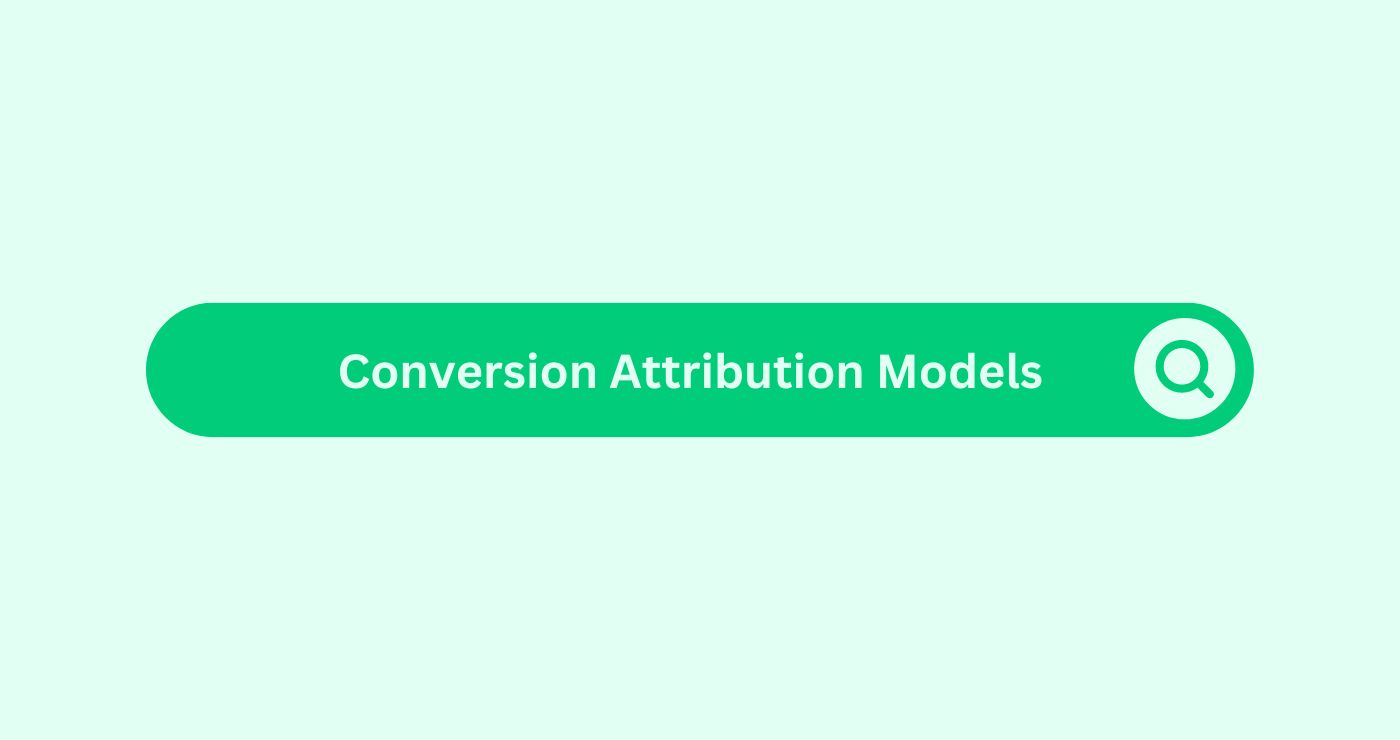Definition
ConversionDefinition In the realm of SEO, Conversion refers to the pro... More Attribution Models refer to methodologies used to assign credit to various marketing channelsDefinition Channels in the context of SEO refer to the vario... More and touchpoints along the customer journey for driving conversions. These models help marketers understand the contribution of each channel to conversions and optimize marketing strategies accordingly.
Example of How You Can Use Conversion Attribution Models
For instance, a company running digital marketing campaigns across multiple channelsDefinition Channels in the context of SEO refer to the vario... More such as search ads, social mediaWhat is Social Media? Social media refers to online platform... More ads, and email marketingWhat is email marketing in the context of digital marketing?... More can use conversionDefinition In the realm of SEO, Conversion refers to the pro... More attribution models to determine which channelsDefinition Channels in the context of SEO refer to the vario... More are most effective in driving conversions. By analyzing attribution data, they can allocate budgetDefinition Budget in the SEO space refers to the allocated a... More and resources to the most impactful channelsDefinition Channels in the context of SEO refer to the vario... More and optimize their marketing mix for better ROI.
Calculation
ConversionDefinition In the realm of SEO, Conversion refers to the pro... More Attribution Models do not involve a specific formula for calculation. Instead, they utilize data analysis techniques and statistical methods to attribute credit to different marketing touchpoints based on predefined models such as first-click, last-click, linear, time decay, or position-based attribution.
Key Takeaways
- Holistic Understanding: ConversionDefinition In the realm of SEO, Conversion refers to the pro... More Attribution Models provide a holistic view of the customer journey, enabling marketers to understand the impact of each touchpoint on conversions.
- Optimization Insights: By identifying the most influential marketing channelsDefinition Channels in the context of SEO refer to the vario... More and touchpoints, attribution models help marketers optimize their marketing strategies and budgetDefinition Budget in the SEO space refers to the allocated a... More allocation for better results.
- Customization Options: Different attribution models offer flexibility to choose the model that best fits the business goalsIn the SEO space, "Goals" refer to specific, measurable obje... More and objectives, allowing for customization based on specific needs.
- Accounting for Complexity: With the proliferation of digital channelsDefinition Channels in the context of SEO refer to the vario... More and complex customer journeys, attribution models help marketers navigate the complexity and attribute credit accurately.
- Continuous Improvement: Attribution modeling is an iterative process that requires ongoing analysis and refinement to adapt to changing consumer behavior and market dynamics for optimal performance.
FAQs
What are Conversion Attribution Models?
ConversionDefinition In the realm of SEO, Conversion refers to the pro... More Attribution Models are methodologies used to assign credit to various marketing channelsDefinition Channels in the context of SEO refer to the vario... More and touchpoints along the customer journey for driving conversions.
How do Conversion Attribution Models work?
ConversionDefinition In the realm of SEO, Conversion refers to the pro... More Attribution Models analyze customer journey data to determine the contribution of each marketing channel and touchpoint to conversions, using predefined models such as first-click, last-click, linear, time decay, or position-based attribution.
Why are Conversion Attribution Models important?
ConversionDefinition In the realm of SEO, Conversion refers to the pro... More Attribution Models help marketers understand the effectiveness of their marketing efforts, optimize budgetDefinition Budget in the SEO space refers to the allocated a... More allocation, and improve ROI by attributing credit accurately to marketing channelsDefinition Channels in the context of SEO refer to the vario... More and touchpoints.
What types of Attribution Models are commonly used?
Commonly used Attribution Models include first-click, last-click, linear, time decay, and position-based attribution, each offering different insights into the customer journey.
Which Attribution Model is the most accurate?
There is no one-size-fits-all answer, as the accuracy of an Attribution Model depends on the specific context and objectives of the business. Different models may be more suitable for different industries, marketing strategies, and customer behaviors.
Can Conversion Attribution Models account for offline conversions?
Yes, some ConversionDefinition In the realm of SEO, Conversion refers to the pro... More Attribution Models can incorporate offline conversions by integrating offline data sources and tracking methods into the attribution analysis.
Do Attribution Models consider cross-device and cross-channel interactions?
Yes, advanced Attribution Models take into accountDefinition In SEO, an Account refers to systematically manag... More cross-device and cross-channel interactions to provide a comprehensive view of the customer journey and allocate credit accurately.
How often should Attribution Models be evaluated and adjusted?
Attribution Models should be evaluated regularly, ideally on an ongoing basis, to accountDefinition In SEO, an Account refers to systematically manag... More for changes in consumer behavior, market trends, and marketing strategies.
Are there any limitations to Attribution Models?
Attribution Models may have limitations such as data availability, accuracy of tracking methods, and complexity in attributing credit in multi-touchpoint journeys. It's essential to consider these limitations when interpreting attribution results
Can Attribution Models be used for offline marketing efforts?
Yes, Attribution Models can be adapted to analyze the effectiveness of offline marketing efforts by integrating offline data sources and applying attribution methodologies to track and attribute conversions accurately.




